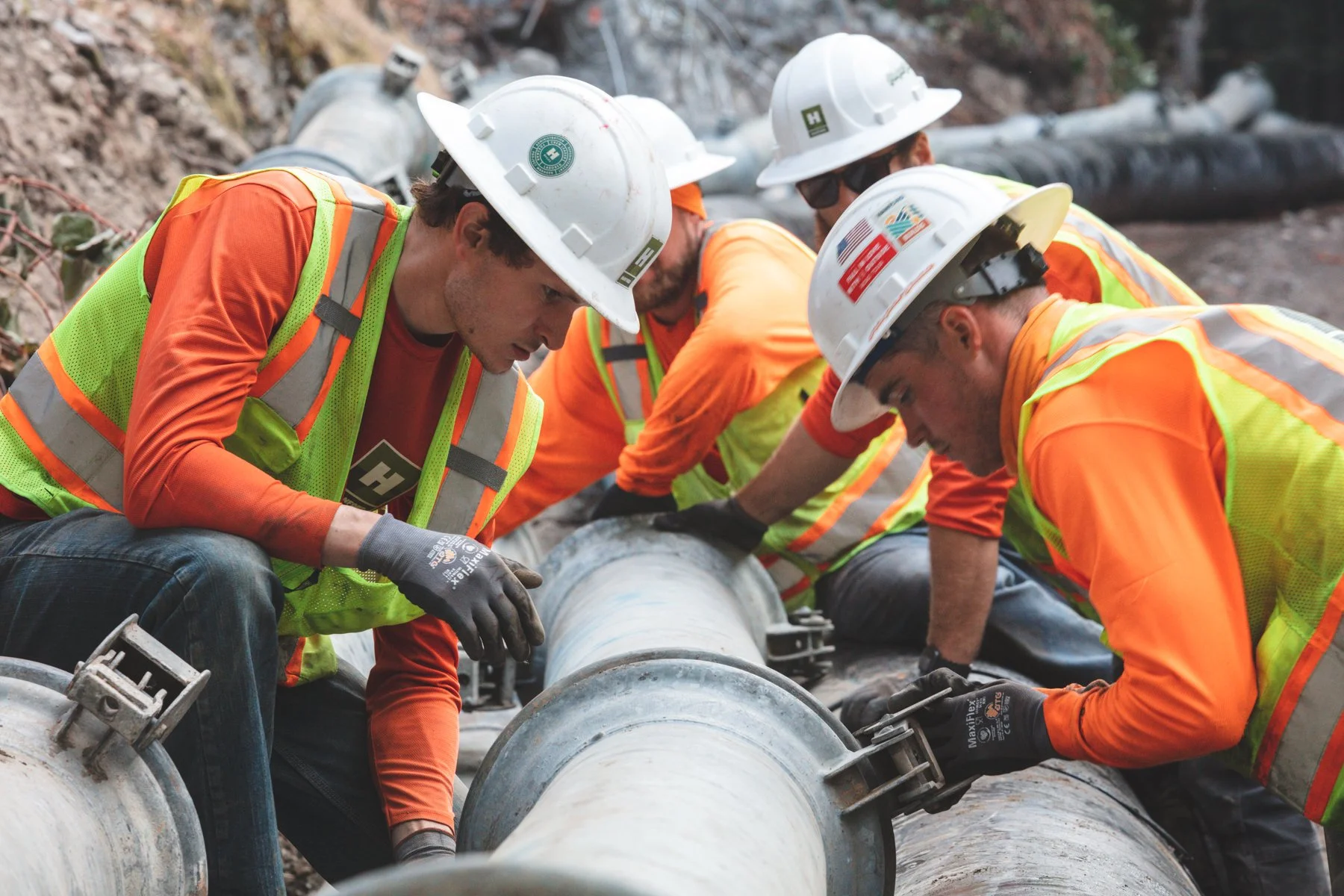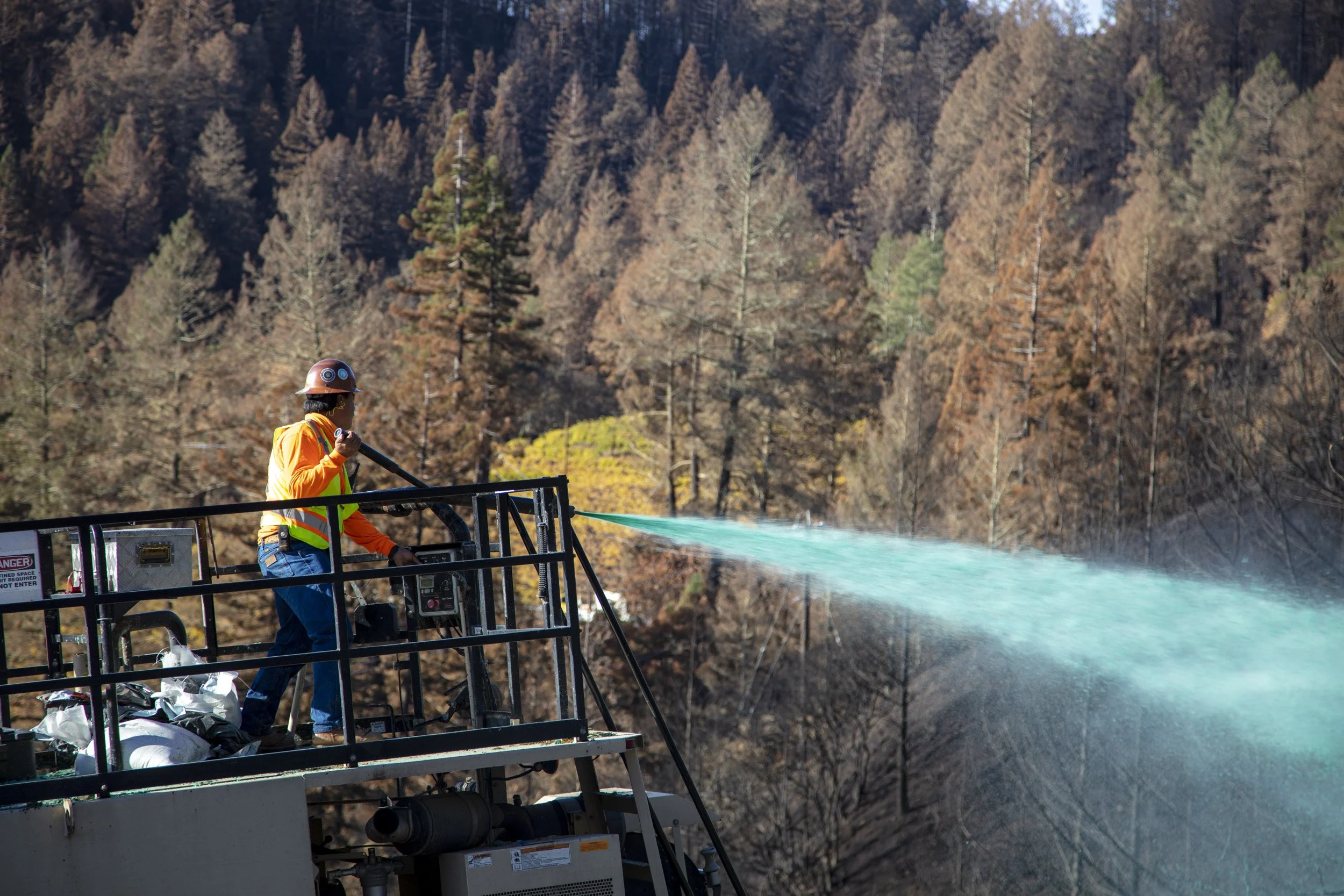
CONSTRUCTION SERVICES
Through our work on native landscape restoration, we have worked under a number of environmental permits and their related requirements. Although installing erosion and sediment control, and wildlife protection devices are typical ancillary, we are well-versed in their various functions and proper installation. Hanford offers our expertise to a range of clients who need additional support installing Best Management Practices (BMPs) on their jobsite.
Stormwater
& Erosion Control
Sediment control and runoff prevention using silt fence, certified weed-seed free biodegradable fiber rolls, drain inlet protection and other standard BMPs.
Erosion control and prevention using natural fiber mats or blankets, certified weed-seed free biodegradable fiber rolls and hydroseed.
Stormwater management facilities construction such as drain inlet protection, general BMP installation and temporary construction entrance protection.
Slope stabilization using a variety of technical approaches and materials including bioengineering (live cuttings and features), shoring, biodegradable netting, tie-backs, vertical soil lifts, and rock placement.
Wildfire burn area stabilization, and restoration, including emergency route restoration, using the above methods in concert with seeding and revegetation.
Teams well-versed in hydroseeding and slope stabilization for sites in challenging environments. Some projects necessitate custom equipment for difficult or remote access (track truck-mounted hydroseeder units, frequent off-road driving).
Well-staffed and equipped for rapid response for rain event stabilization activities on-sites.
Gold Shovel Standard certified – the Gold Shovel program’s objective is that all excavators demonstrate exemplary caution around buried infrastructure; excavators adopt standard safety management elements into process and quantitively measure and communicate success about damage or accident reduction.
Wetland Restoration
& Mitigation
Hanford has worked with a range of stakeholders in the field of wetland restoration and reconstruction to develop methods to rehabilitate this sensitive and important habitat. Freshwater and saltwater wetlands, meadows, and floodplains provide valuable habitat for many aquatic species and are home to a remarkable diversity of native plant life. These sensitive habitats are often the most impacted from human activities.
Employ plug and pond method to fill incised main channels within a wetland to restore ponding and sinuous multi-channel flows
Detailed grading to achieve varied gradients for seasonal and perennial wetland zones
Vernal pool restoration and mitigation
Amphibian habitat construction such as breeding ponds
Wood structure installation such as beaver dam analog construction to aid in aggradation of incised channels
Design and install complex stream bypass, dewatering, and filtering systems in order to protect existing wildlife, habitat and to provide optimal construction conditions




















Featured Projects
Hydroseeding & erosion Prevention
Post fire recovery hydroseeding
ST HELENA - This project was focused on the restoration and stabilization for post fire recovery of the 2020 Glass Fire wildfire in Northern California, that started on September 27, 2020 and remained active for 23 days.
READ MORE →
CONSTRUCTION
POINT REYES NATIONAL SEASHORE
MARIN COUNTY - Hanford was awarded the Critical Dune Habitat Restoration project at Point Reyes National Seashore through the RFP process in the winter of 2010/2011. The project was designed to restore approximately 76 acres of native dune habitat, primarily through removal of the invasive European beachgrass and iceplant.
READ MORE →
CONSTRUCTION
NEEFUS GULCH FISH PASSAGE IMPROVEMENT
MENDOCINO COUNTY - Hanford replaced two undersized culverts with a large arched culvert running under Appian Way. Once the culvert was assembled and back-filled to road grade, Hanford installed a stream bed material upstream and through the culvert to the downstream outlet of the culvert that led to 9 log grade control structures.





